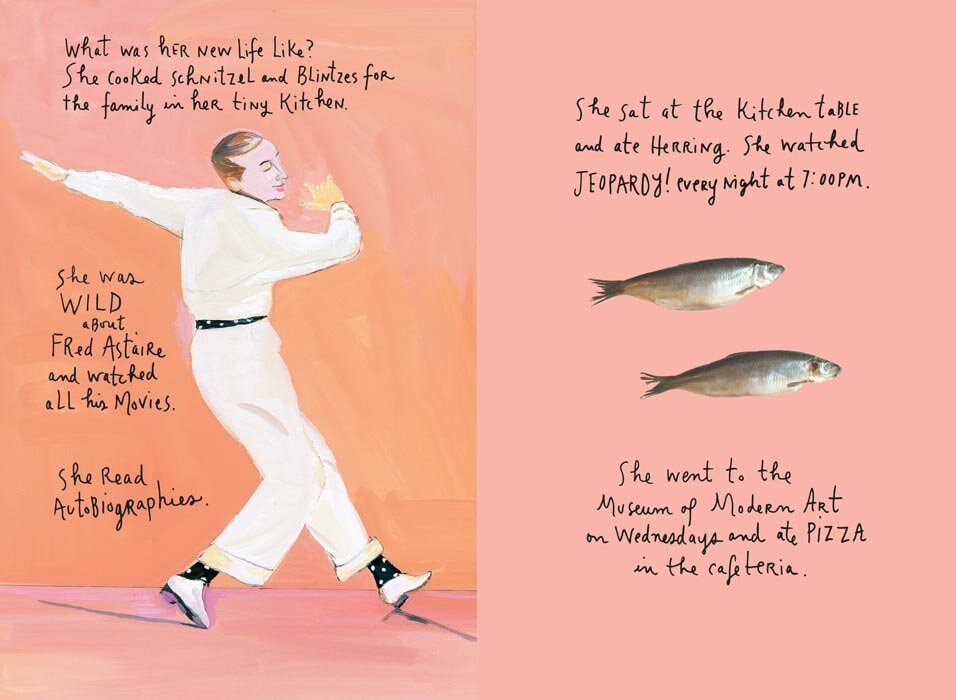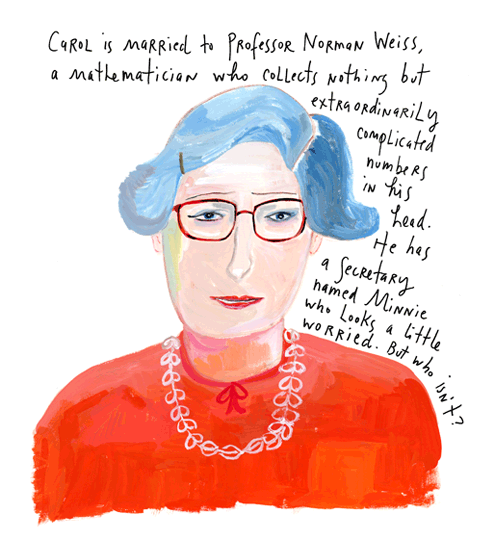Maira Kalman Starches the Pillowcases
The artist, writer, and ironed-sheets enthusiast on the unexpected invigoration of grief

I was handed my first Maira Kalman book shortly after moving to New York. My boss at the time was sort of a monster, but he had great taste in literature: he pressed into my hands, at various points, M.F.K. Fisher, Laurie Colwin, Truman Capote’s In Cold Blood, and many other writers who became polestars and guides. (He hired me to arrange his dinners and chase around after him picking up his used tissues because I’d read Janet Malcolm already. I think he figured that if I liked Malcolm I was educable, despite being a Californian, not a New Yorker, and entirely clueless about the world of publishing.) Anyway, he’s the one who, upon hearing I didn’t know who Maira Kalman was, sent me off to correct this error. Another polestar!
I loved everything about Kalman’s work: her beautiful handwriting, the bright colors she painted with, her playful and unexpected choice of subjects. Kalman has written books about cake, American democracy, places she’s traveled, objects she loves, dogs, Thomas Jefferson, and whatever else comes to mind. Often, she just writes about tiny moments in her day, or interesting people she comes across in New York or in her reading.
I’m not alone in that admiration: Kalman is sort of a New York institution (as my former boss knew). She’s a regular contributor to the New York Times and the New Yorker; she’s collaborated with David Byrne, Daniel Handler, Michael Pollan, and Isaac Mizrahi. In 2017, she and her son co-created an installation at the Metropolitan Museum of Art, which was a perfect reproduction of Kalman’s mother’s closet. Kalman authored a book to accompany the exhibit, which tells the story of her mother’s life as an émigré.

Kalman’s mother, Sarah Berman, would not have called herself an artist, and Kalman insists that Berman would have thought it nutty (“in the nicest way”) that her underpants wound up at The Met. But Berman was a woman who took immense care with everything she did, whether that was ironing sheets (which Kalman still does) or lining up her shoes. This is the same ethos —a tenderness toward the material world, and a sense of how the phenomenal always suffuses the quotidian— that animates Kalman’s work. A refusal to distinguish between art practice and life practice is one of the hallmarks of Kalman’s style.
“[In my mother] I was observing somebody doing something beautifully and doing something with all of her heart. Not to show off, not in vanity, not with egoism, just with a sense of accomplishment of doing something well. And you can’t miss that, when you see somebody doing that. It wasn’t lost on me that that was a way of being an artist.”
So that’s what Kalman and I talked about: her mother, and her own fondness for obituaries and starched pillowcases and riding the New York City buses, which she says is better than therapy.
We also talked about the death of her husband Tibor from cancer in 1999— a blow that she thought would flatten her completely— and the strange invigoration that emerged in and from her work during grief. She was both devastated, she says, and more vibrant and motivated to make art than she could have possibly imagined.
“I guess I’m irrepressible. There’s nothing that happens to me that doesn’t get filtered into my work. Everything that I do is a journal of my life and a journalistic view of the world.”
Also mentioned in the ep:
Fred Astaire’s performance of “Cheek to Cheek”
Henri Cartier-Bresson on “the decisive moment”
Not mentioned in the episode, but a fun watch: Maira’s TED Talk.
To learn more about Maira Kalman and to hear the interview, listen along:
That’s it for now! Wishing vibrance and irrepressibility for us all.
-Jordan
READ MAIRA'S BOOKS








This was such a fantastic interview. My first time listening to a favorite artist. The ironing of pillowcases, the value of the domestic, the definition of remorse… Thank you so much, Jordan! Love Kalman’s work and also recently quoted “Women Holding Things” in a draft. So appreciate the various artists you bring on.